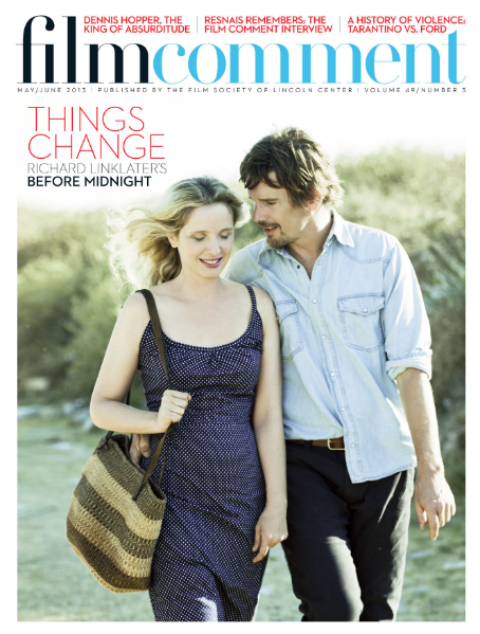
Sofia Coppola is uncommonly gifted at the articulation of something so fleeting and ephemeral that it seems to be on the verge of evaporating on contact with her hovering, deadpan, infinitely patient camera eye. In her three best films—Lost in Translation (03), the wildly underrated Somewhere (10), and The Bling Ring, based on the true story of a pack of roving Adderalled teenagers who sauntered in and out of the homes of multiple celebrity-culture superstars for a few months in 2011 and made off with millions in cash, jewelry, and haute couture—she has given us rare glimpses of people as they discover, almost by chance, that their existences are utterly absurd. The fact that this is a dilemma of the rich has not gone unnoticed—most of the complaints about her films have been class-based, of the “why should we care about these people?” variety. But Coppola’s films are so specific and carefully observed that they incorporate class. It’s not so much a question of being asked to identify with the plight of the wealthy (as in something like This Is 40), as it is of being confronted with the raw facts of this kind of absurdity and this kind of sadness under these particular circumstances, which the director herself knows in minute detail. If you wanted to get pithy about it, you could call her a neorealist of hyper-materialist life.
The Bling Ring, like all of Coppola’s films, has less of a plot than a setting, in the musical sense. As in Marie Antoinette (06) and Somewhere, we are placed in the orbit of a character who appears to see himself as a cipher—in this case, Marc (Israel Broussard), a lonely, hyper-medicated teenager in Calabasas. Marc is drawn into the orbit of Rebecca (Katie Chang), who befriends him for no particular reason and who, just because she can, breaks into cars (most of them unlocked) and steals wallets stashed in the glove compartments or under front seats. The air of indeterminacy and fuzzy motivations—every action seems to be on the verge of not occurring—is carefully nurtured and cultivated, and before long raiding the homes of the stars becomes the favorite activity of the two teenagers and an ever-growing pack of friends. “Let’s go shopping!” is the texted rallying cry. The shoppers include Nicki (another good Emma Watson performance) and her sister Sam (Taissa Farmiga). Their blissed-out mother Laurie (the ineffable Leslie Mann) prompts them to recite their morning verses from the church of The Secret and administers their daily antidepressants like communion wafers.

Like Somewhere, The Bling Ring sneaks up on you. Somewhere during the first visit to Paris Hilton’s house (if it isn’t the real thing, it could just as well be), you might find yourself, as I did, alternately charmed, mesmerized, and horrified by the lives of the characters and the homes they enter. Halfway through the film, Marc and Rebecca wander through what is supposedly Orlando Bloom’s open-plan house at night, viewed from an exquisite remove several tiers above in the Hollywood hills, the sounds of howling coyotes and wailing police sirens quietly echoing in the distance—a suspended spell of uncanny beauty, and one of the most beautifully lyrical stretches I’ve seen in a movie in ages.
I’m not sure if Coppola’s film ends as satisfactorily as it might have—resolving a narrative about characters who lead unmotivated lives does present its dramatic problems—but I don’t think it matters all that much. Unlike








